Road trip in Germany – Castles, Gardens, History and UNESCO sites in Eastern Germany
categories: europe travelGermany is an amazing country to visit and a fun country to visit via a road trip. The highways are world-class. The drivers are competent and the sites are amazing. The following road trip starts in Berlin and visits some of the best sites in what used to be East Germany heading west. I took this road trip around the 2017 500th anniversary of the Protestant Reformation. While the theme of this trip started with the reformation, it then turned into a scavenger hunt for German UNESCO World Heritage Sites. I visited a number of sites that are key parts of the last 500 years or so of German History. I visited mostly the states of Berlin, Saxony-Anhalt, and Thuringia.

Erfurt, Germany
Table of contents: ()
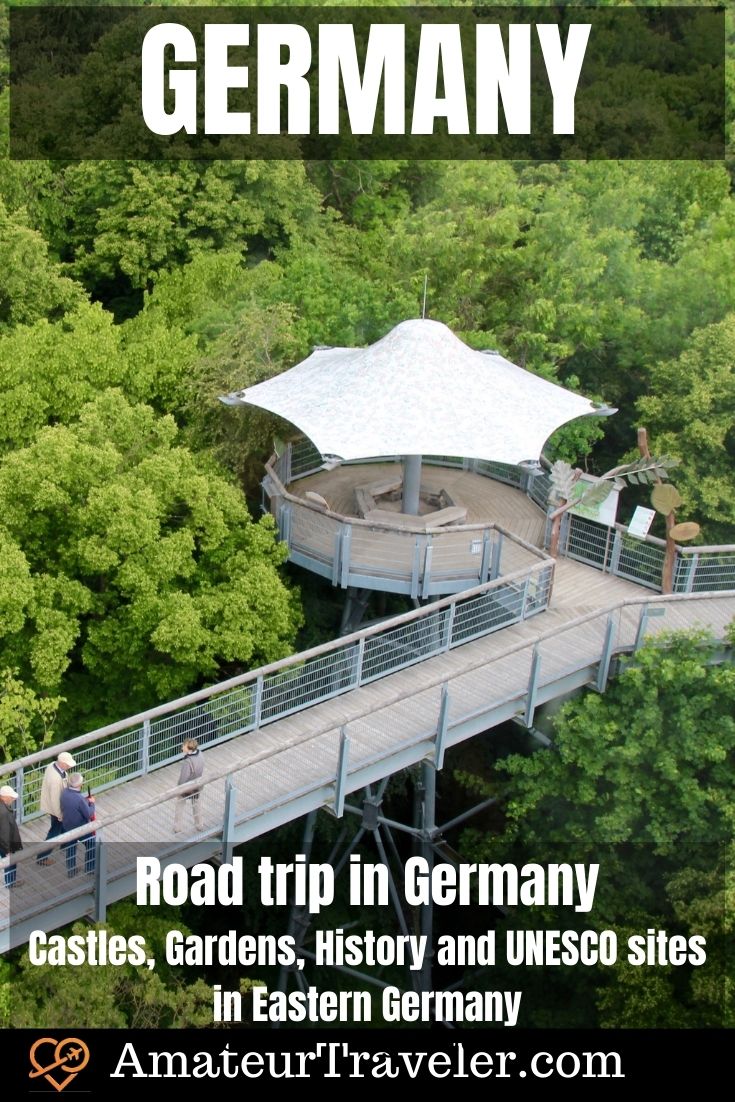
Berlin
The 3 easiest cities to reach by international flights in Germany are Frankfort, Munich, and Berlin. For this trip, I flew to Berlin. I was only in Berlin for 24 hours (see 24 Hours in Berlin, Germany) but if you have not spent much time in the city I would recommend adding on a few days.
For museum lovers, Museum Island is one of the top destinations in the World. Where else can you see such sites as the gates of Babylon (Pergamon Museum) or the bust of Queen Nefertiti of Egypt?
For history buffs, I highly recommend a walking tour of Berlin. There are free walking tours that are a good start for first-time visitors that start near the Brandenberg Gate. But there are also Cold War themed tours, hipster tours, or food tours in Berlin.
I have visited Berlin in December when you can fall in love with the Christmas Markets. It is a special time of year when the stalls selling ornaments, crafts, and gluhwein (hot spiced wine) are set up in city squares like the Gendarmenmarkt. The city is a bit less crowded but the days are much shorter. If you are coming for the concerts and museums, this is as good a time as any to come to the city.
I have also visited Berlin in Summer when all of the city is outdoors. Beaches open up along the Spree River. The cities parks and green spaces are filled with joggers and bicyclists. If you are Looking for walking tours, parties, and parks then this is the best time of year to visit Berlin.
Don’t bother picking up a car until the day you plan to leave Berlin as there is no point driving in the city when public transportation is a better way to get around.
We have covered Berlin in much more detail on the Amateur Traveler podcast in such episodes as Travel to Berlin – Episode 684
Wittenberg
It is less than an hour from Berlin to Wittenberg. Wittenberg has a beautiful medieval core. The city was made historically significant when the local pastor Martin Luther, who was also a professor of moral theology at the local University, nailed a list of 95 issues he had with the Roman Catholic church to the church door. His intent was to have a scholarly debate. The text was, after all, posted in Latin not German. But instead, this turned into the spark that ignited the Protestant Reformation.
Luther Wedding festival
A great time to visit the city is during the Luther Wedding festival that they hold every June. The excuse for the festival is the commemoration of Luther marrying former nun Katharina von Bora as the new protestant church rejected that priests could not be married. This festival is half history, half renaissance fair, and all fun. There are concerts, parades, costumes, crafts, and reenactments. There are lots of good things cooking and beer and spiced wine available liberally.
There’s a big parade on Saturday, but the tourism board arranged my schedule to get there for a children’s parade on Sunday. It is adorable.
The whole town is turned into this medieval village. Even if you don’t care anything for Luther and you don’t care anything for history, you still will probably enjoy this festival… unless, of course, you hate renaissance fairs.
Luthor House and Melanchthon House
The main sights to see in Wittenberg are the Luthor house, which was an old monastery that he then lived in as a house with his large family. He and his wife had six kids of their own and they also raised the children from two different sisters who had died. The house has a number of pieces of artwork that depict the life of the reformer.
You can also visit the house of the reformer Philip Melanchthon. Both houses are UNESCO World Heritage Sites. Both are very well presented. The Luther house probably did the best job of having more English available for tourists in terms of the whole history of the Reformation. It’s not a bad starting point if you don’t know that story.
Melanchthon was a contemporary of Luther’s. He was younger than Luther. He wrote the Augsburg confession that says what Lutherans believe. The Melanchthon house is really well set up for visiting with kids. Kids get an old key. And as you walk around the house, you get to open up these secret compartments where you get clothes that you can put on that would be like that time period, or where you can see what they would have had in their cupboards. It is the better experience of the two if you are traveling with kids.
Luther and Melanchthon continued to be recognized when this area was East Germany even though the communists did not encourage religion. Luther was remembered for his importance in German nationalism. Melanchthon was remembered as the one who opened the first German public school. He is sometimes called the “Teacher of Germany”, so the emphasis on kids at the Melanchthon House makes sense.
Castle Church
The other interesting sight is the castle church. The front doors of the church have been replaced with commemorative bronze doors with the 95 theses on them. The Castle Church also contains the graves of Luther, Melanchthon, and Frederick the Wise. Frederick the Wise was the elector of Saxony. The seven electors in Germany were high-ranking princes who chose the Holy Roman Emperor so Frederick had a lot of political power which he used to protect the fledgling protestant church. Frederick was succeeded by his brother Johann the Constant. I love the names.
One interesting thing about the castle church is the tower you can notice from all over town. It is a very tall tower inscribed with the words ‘Ein Festus Burg” or “A Mighty Fortress”. A Mighty Fortress is the best known of the hymns written by Luther.
Dessau / Wörlitz
My next stop was Dessau and nearby Wörlitz. Between them have three different UNESCO World Heritage Sites.
Bauhaus
If you are a fan of architecture you will be familiar with the Bauhaus movement in Germany. It was an architectural school that started in Weimar and then was forced to move to Dessau is in the pre-war years. It starts in 1919, after World War One in its modern architecture, when you see the Bauhaus building and you think, oh, that just looks like in building from the 1950s. It is a very modern style of architecture, except that was built in the 1920s. You can tour the Bauhaus Dessau Foundation as well as some of the nearby Bauhaus-styled buildings.
Then there’s also UNESCO bio preserve on the Elbe River there in Dassau, preserving that whole area along the Elbe. If you had extra time, this would be a great place to get out on a canoe on the river into the wetlands.
Dessau-Wörlitz Garden Realm,
My favorite of the UNESCO sites near Dessau is the Dessau-Wörlitz Garden Realm. You don’t have to be a particular fan of gardening to enjoy these. The garden kingdom is a collection of seven different gardens built during the Age of Enlightenment in the 1700s. They were built during a time when English gardens were coming to Germany.
These are beautiful, really wonderful gardens built by people who clearly had way too much money. There’s a palace in Wörlitz, which is the first of what Germans would call classicism, what Americans would call neoclassical. If you’re familiar with the style of the White House, this house is built in the same style. So it’s reflecting the Greek styles. Behind the palace, is this amazing garden.
This is a garden for exploration and getting lost in. Here there is a statue of Venus. Over there is a fake volcano with grottoes underneath that you can go through. If you have kids, skip the Bauhaus site and come here and set the kids free to roam. It takes at least half a day to walk through these gardens and remember that it is one of seven different gardens. As you go walking through here, there are little garden houses that you can stay in. I understand it’s not all that cheap, but it’s an amazing, beautiful place. Sometimes they perform live theatre on the stone island that has the fake volcano and they also have fake volcano eruptions. It would be a perfect setting for a play like A Midsummer Night’s Dream.
You can also rent a boat are take a boat ride through the canals that bisect the gardens.
In WWII, the city of Dessau was heavily damaged because they had a factory for making the German Junkers bombers. After reunification, about a 3rd of the people in the area, many young people left for jobs in the west. This is true of many of the cities in the old East Germany (GDR).
Leipzig
I did not stop in Leipzig on my trip, but if I had had more time I would have added this significant city to my itinerary. Leipzig was the site of one of the major battles of the Napoleonic Wars and was also where the movement that eventually tore down the Berlin Wall started in Germany. Leipzig is know for its music and has one of the best opera houses in Germany.
- Get a universal plug adapter
- Get an eSim to be able to use your smartphone abroad.
- Buy Travel Insurance
- Search for Great Tours HERE
- Get a Car Rental
- Book Your Accommodation HERE

Weimar
Weimar is the next place I went. The drive from Dessau is a couple of hours. Students of history will recognizer the city from the Weimar Republic. After WWI a new constitution was drafted for Germany in Weimar. But in Germany Weimar is better known for events that happened much earlier.
Remember those German electors from Wittenberg Frederick the Wise and his brother John the Constant? John’s son John the Magnanimous loses his electorship when he is defeated by the Holy Roman Emperor Charles V in one of the first counter-reformation wars. He and his family then come to the city of Weimar.
Weimar becomes the Center for the German enlightenment in the 1700s. And so there’s a UNESCO World Heritage Site in Weimar, about the German Classicism movement. It’s people like the poet Goethe, who I’ve heard referred to on this trip as the German Shakespeare, who writes things like Faust, and Johann Sebastian Bach writes a lot of his work here in Weimar, as well as Friedrich Schiller and Franz Liszt. The Classical Weimar UNESCO site includes buildings owned by some of the composers as well as Belvedere Castle and Park.
Weimar is a beautiful city. Much of the city was destroyed in the war but a lot of money has gone into rebuilding Weimar because of its significance. It was a European Capital of Culture in 1999 and that brought a lot of money into Weimar for rebuilding. The city has beautiful cobblestone streets with cafes along the sidewalks. It really changed my picture of these old GDR cities in the east. If you want to make history more fun for your family consider a history scavenger hunt in Weimar.
For a darker time in German history visit the Buchenwald Memorial near the city that marks the location of the largest of the WWII concentration camps in Germany.
Erfurt
The city of Erfurt’s name derives from the German word that means muddy ford of the river. The city is much more beautiful than the name would suggest. Erfurt is the capital and largest city of Thuringia. It was largely undamaged from the bombing in WWII so the city has a number of beautiful medieval buildings.
Krämerbrücke
The best known of these is the Krämerbrücke or Merchants Bridge which is covered in half-timbered buildings. Erfurt was a market town and to this day is a big shopping city for the region. Erfurt has a Merchants Bridge Festival, which also happens in June which is why my photos show a number of fair booths.
I did a walking tour with the Tourism Board. Many of the cities that I visited in Germany had these walking tours, often for free. Erfurt also has a tourist train tour.
St. Augustine’s Monastery
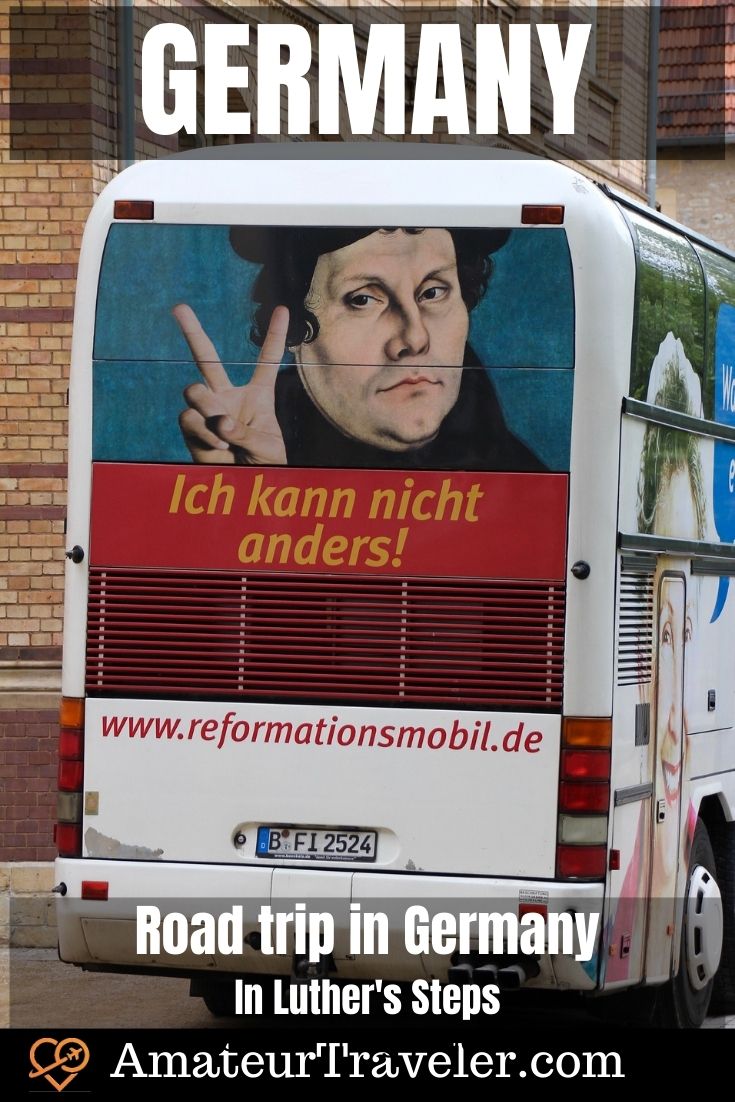
I toured St. Augustine’s Monastery which was his monastery. You can go into his little niche where he would study or pray. It’s very barren as you would expect. Local tour guides will point out a stained glass window in the monastery chapel which depicts a rose with cross in the center which Luther will later use as a symbol for his new church.
One ironic piece of history is that before he became a monk Luther would have spent a night lying prostrate before the altar on this chapel floor. That would put him pretty much right on top of the grave of Johannes Zacharias, bishop of Erfurt. Bishop Zacharias was best known for his denunciation of the reformer Jan Hus 100 years earlier at the Council of Constance in Germany.
Cathedral Hill has the twin churches of Erfurt Cathedral and St Severus’ Church.
Petersberg Citadel
But for the best views of the city hike up to Petersberg Citadel which is one of the best-preserved city fortifications in Germany. The fortress was used by the local military for 300 years. starting in the mid-1600s. It is a star fortress.
Old Synagogue and Mikveh
With all this protestant and catholic history, the only UNESCO World Heritage site in the city is Jewish (Although St. Augustine’s Monastery is part of the proposed collection of Luther sites for UNESCO designation). The Old Synagogue and Mikveh (ritual bath) in Erfurt preserve some of the architecture and history of a local Jewish community that dates back at least to the 11th century. The Synagogue is one of the oldest and best-preserved in Europe.
Thuringian Food
One local restaurant that I would recommend is Faustus. This sounds like a place where you would have to sell your soul to get a good meal, but the German word Faust means “fist”. So this is German “fast food” or food you can hold in your hand. Thuringia is known for their bratwurst. You get a fist-sized bun with a sausage 3 times as long as a bun. Thuringians love their brats. You eat a brat with mustard. There is even a Mustard Museum and shop in Erfurt.
Hainich National Park
After Erfurt, I visited the third of the places that I would really recommend for families with kids and that’s Hainich National Park. There is a UNESCO bio preserve inside this national park that preserves one of the beech tree forests in Europe.
The spot that you’re really going to enjoy is an observation tower and a canopy walk that has been built in the canopy of this deciduous forest. It is beech trees and elm trees, and maple trees. You are walking up in the canopy and it is very, very well presented. There are beautiful views from the tower, but also wonderful activities for kids.
There are rope bridges that go across from one of these metal walkways to another one. There are little rope ladders that kids can climb down in that I don’t even think adults would fit in, as well as educational information in both German and English.
There are also some great presentations in the museum there at the park entrance that has the walkways and the viewing tower although that information right now is still only in German in the exhibits there. If you happen to have a German-speaking kid will really enjoy it. It is very much targeted towards kids in school groups. If you don’t understand German then you will need your translation app. There are models of you de Fledermaus (bats), as well as the other animals in the area like foxes and wild cats. Wild cats look like a fat house cat, but it is a wild animal. It looks like the nearest relative to your house cat.
Hainich National Park is a tiny national park but it is a great place if you want to hike.
Eisenach
The next stop, which is nearby, is Eisenach. While we are on the topic of hiking, Eisenach has a multi-day hiking trail that goes all the way down into Hungary There are a number of interesting long-distance hiking and biking trails in Germany.
The last place I stopped at is Eisenach, including Wartburg Castle. Eisenach is the home for a couple of interesting historical people. This is where the Bach family got their start as the musical directors. Johann Sebastian Bach is born in Eisenach when his father was the musical director of the local church there. Both he and Luther go to the same local school dedicated to St. Elizabeth, although in different time periods.
There are a couple of small museums in Eisenach. There is the Luthor house (where he moved when he was there as a young man and supported himself by being a cantor by seeing in the church) and the Bach House where Johann Sebastian Bach was born. There’s also a museum there to a Wagner because Wagner has connections to this city as well.
Wartburg Castle
The most popular site is Wartburg Castle which is on a hill just outside the city. This was the home for a time of St. Elizabeth who was a local princess. It was also where Luther hideafter he was condemned by the Emperor at the Diet of Worms. He was “kidnapped” by the elector, Frederick the Wise, and he is brought in hiding to Wartburg Castle under the disguise of his being a knight in training. This is where the translation of the New Testament into German happens. And this is significant for religious reasons, obviously, towards the reformation.
The German New Testament was is also celebrated in the GDR time as the beginning in a way of German unification. In Luther’s time there are at least 18 different languages. High German is unified by the translation of the Bible into German, starting here in Wartburg with the New Testament, which happens only over the course of 11 weeks. The Luther Bible becomes for German what the King James Bible, for instance, becomes for English a centralizing standardizing document that everyone knows.
Germany is not a single country until the late 1800s. Also at Wartberg, just after the Napoleonic Wars 1817 a group of students met from all over Germany and formed the student fraternity movement, which proposed German unification. They were responding in part to the Napoleon Wars. If they were one German-speaking people, they argued, then they would be more powerful therefore safer.
The castle itself is interesting. I did an English-speaking tour. You can see the parts of the castle were redone in the Age of Enlightenment or the romanticism period. They are these amazing, beautiful, very stylized romantic rooms. There’s also a concert hall where the ceiling acoustics were designed in part with the help of Franz Liszt.
Wagner wrote an opera about Wartburg Castle and the Wartburg Song Contest. The story of the Wartburg Song Contest is likely a myth. The idea is that a group of minstrels are gathered together to see not who is the best minstrel, but who is the worst. The worst one would be executed. Periodically in Wartburg Castle, they will stage that Wagner Opera in the concert hall.
Kassel
Bergpark Wilhelmshöhe
I did make one other brief stop in Kassel, which has yet another UNESCO World Heritage Site. The Bergpark Wilhelmshöhe is a palace that is best known for its waterworks. It has a series of artificial cascades and waterfalls and fountains that are gravity-driven from a hill from the Hercules monument on the top of that. Inside of the castle is one of the better collections of Dutch masters paintings in such in Germany.
Ending Your Trip
I drove from Kassel to Düsseldorf to fly home but you could also drive to Frankfurt am Main which is a major German transportation hub.
Before You Go
Here are some other articles to help you plan your trip:
- European Car Rentals: The American Traveler’s “Must Know” List
- The Ultimate Guide to Rental Cars
- Driving in Germany as a Tourist – German Road Signs and 12 Others Things to Know
Podcast
I covered this trip in somewhat more detail on the Amateur Traveler podcast in Road Trip Through Luther Land and the Heart of Germany – Episode 519
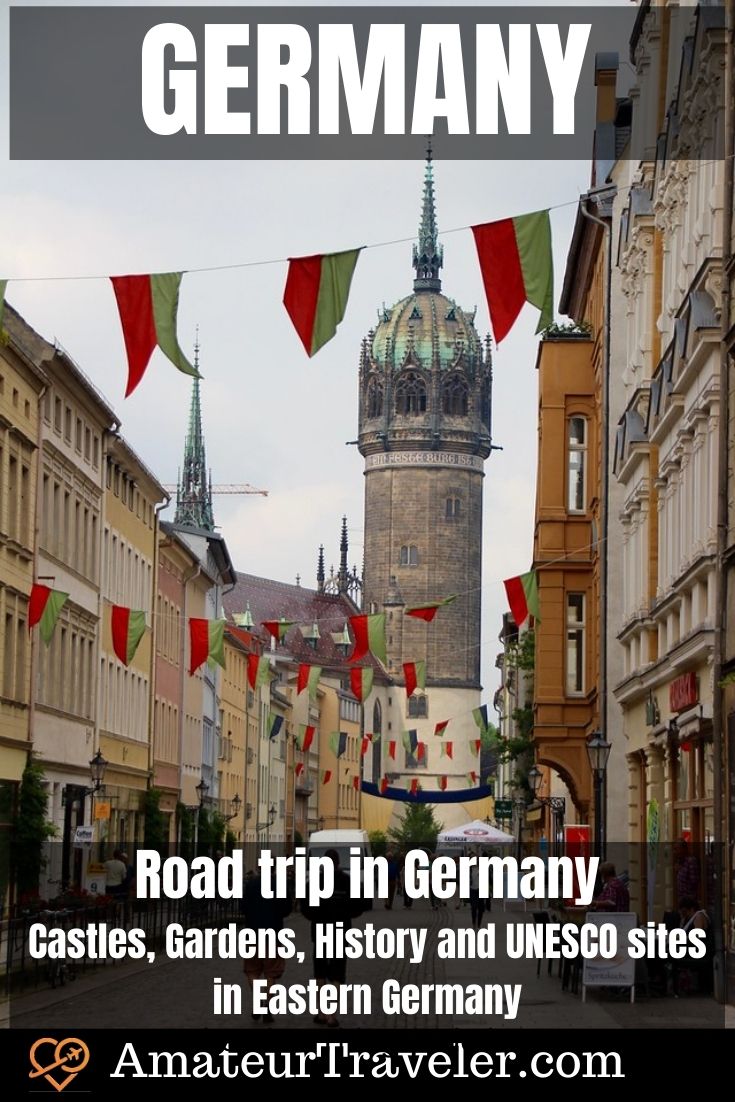
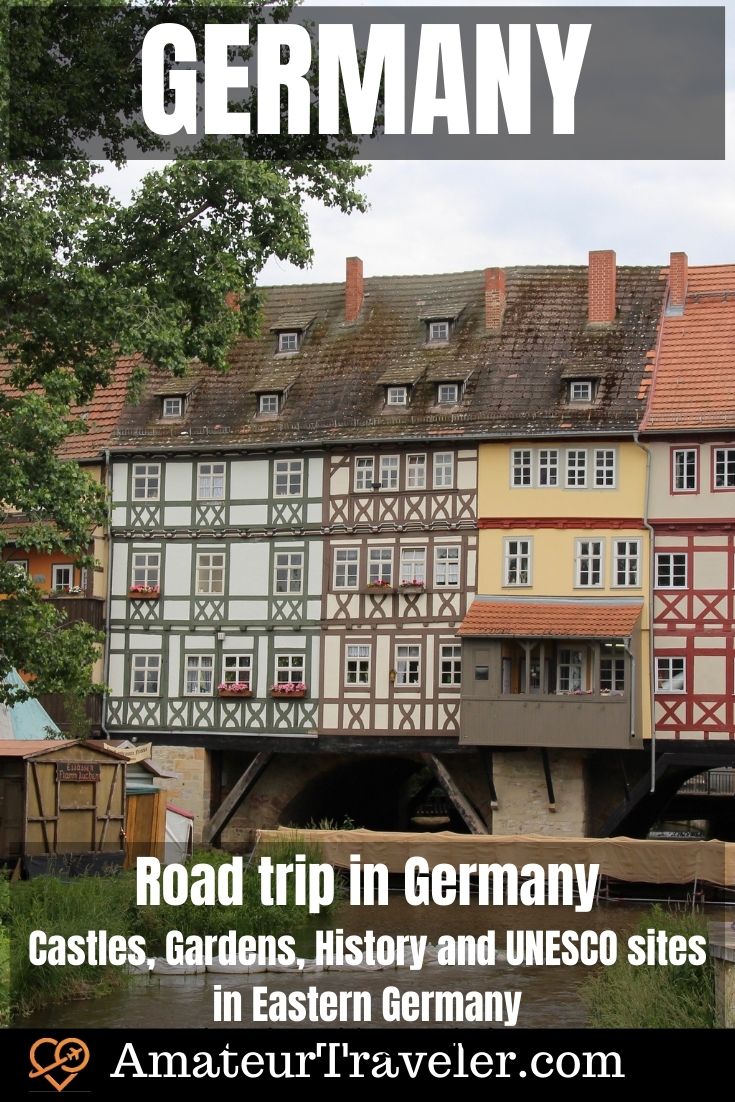
+Chris Christensen | @chris2x | facebook
Leave a Reply
Tags: article, berlin, germany, road trip, wittenburg


































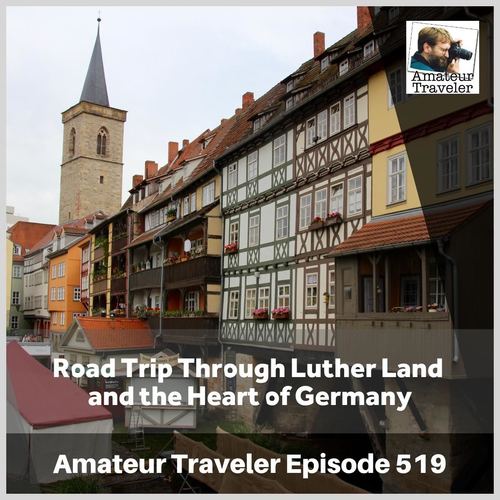 Road Trip Through Luther Land and the Heart of Germany – Episode 519
Road Trip Through Luther Land and the Heart of Germany – Episode 519 A Cold War Tour of Berlin – The Best Sites for History Buffs
A Cold War Tour of Berlin – The Best Sites for History Buffs 13 Places to Visit in Germany other than Berlin and Münich
13 Places to Visit in Germany other than Berlin and Münich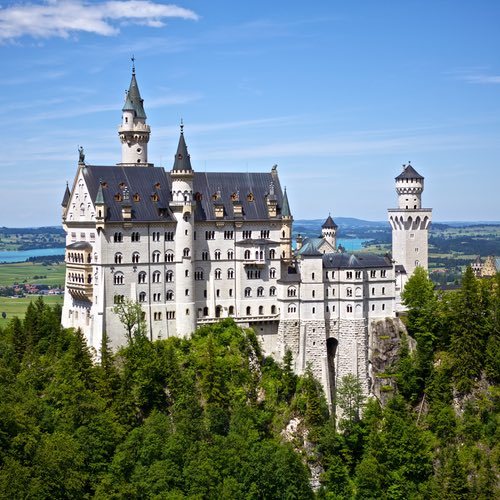 Road Trip through Bavaria in Southern Germany
Road Trip through Bavaria in Southern Germany
